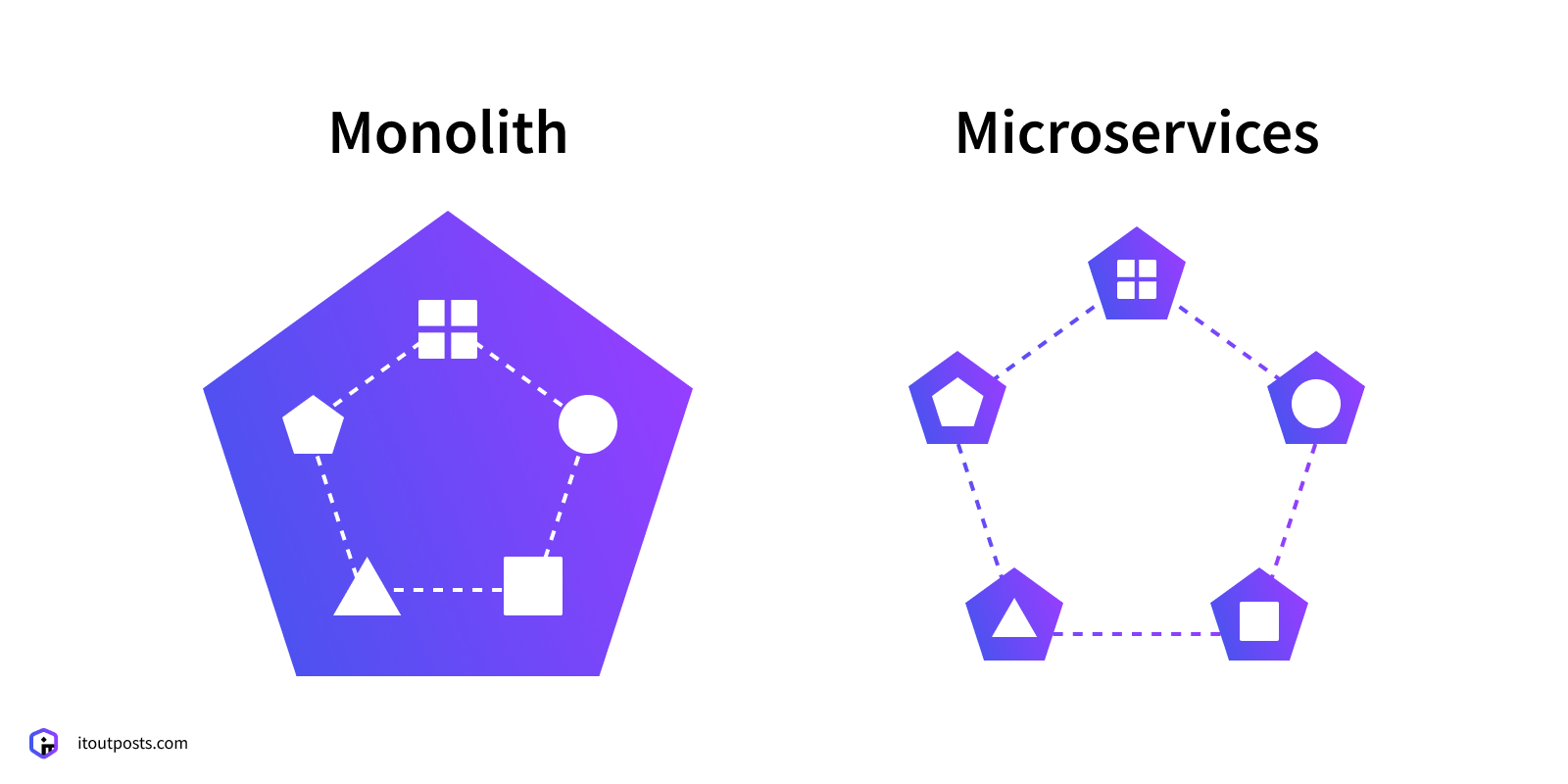When developers talk about software architecture, the debate between monoliths and microservices comes up almost every time. Some say microservices are the future. Others argue they add unnecessary complexity.
The truth? Both have strengths and weaknesses — and the right choice depends heavily on your team size, budget, and scaling needs.
Let’s cut through the hype and focus on real-world costs and complexity.
1. What’s the Difference?
Monolith
A monolithic application is a single, unified codebase where all features are packaged and deployed together.
Example:
An online store with product listings, checkout, and payment all inside one codebase and one deployment.
Pros:
- Simpler to build and deploy
- Easier to debug and test locally
- One database, one set of logs, one environment
Cons:
- Harder to scale only one part of the system
- Large deployments can be risky (one bug can take down the whole app)
- Can become messy as the team grows
Microservices
A microservices architecture breaks an application into many smaller, independent services, each responsible for a single function.
Example:
The same online store split into:
- Product Service
- Cart Service
- Payment Service
- User Authentication Service
Each service is deployed, scaled, and maintained separately — often by different teams.
Pros:
- Scale only what’s needed (e.g., payment service during sales)
- Teams can work independently
- Can mix programming languages and technologies
Cons:
- More infrastructure and DevOps overhead
- Distributed debugging is harder
- Requires more robust monitoring and networking
2. Cost Factors
Hosting
- Monolith:
One server/container running the whole app. Costs scale vertically (upgrade CPU/RAM). - Microservices:
Multiple containers or VMs. Even if each is small, the total cost can add up — especially when idle.
DevOps & Tooling
- Monolith:
One CI/CD pipeline, simpler monitoring. - Microservices:
Many pipelines, more deployment configs, API gateways, service meshes.
Team Productivity
- Small teams (1–5 devs): Monoliths are faster to build and maintain.
- Large teams (10+ devs): Microservices reduce merge conflicts and allow parallel work.
3. Complexity Trade-offs
| Factor | Monolith | Microservices |
|---|---|---|
| Debugging | Straightforward | Requires tracing across services |
| Testing | End-to-end in one environment | Integration tests across services |
| Deployments | One deployment pipeline | Many, often independent pipelines |
| Data Management | Single database | Multiple databases, eventual consistency |
| Network Reliability | Minimal concern | Service-to-service calls can fail |
4. When a Monolith Wins
- Early-stage startups — focus on shipping features, not infrastructure.
- Small teams — fewer moving parts = less mental overhead.
- Predictable workloads — scaling a whole app vertically is fine.
5. When Microservices Make Sense
- Scaling bottlenecks in specific areas — e.g., a search service getting hammered.
- Independent feature teams — allows parallel development.
- Complex systems — when different modules have vastly different tech needs.
6. The Hybrid Approach — Modular Monolith
Many teams start with a modular monolith:
- Keep all code in one repository and deployment,
- But structure it in modules with clean interfaces.
Later, high-load modules can be split off into microservices when it’s actually needed.
7. Key Takeaways
- Microservices are not automatically better — they solve scaling problems, but create operational ones.
- Monoliths are not old-fashioned — they’re simpler and faster to start with.
- The best architecture is one that fits your current scale and team capabilities.
- Start simple, extract services only when there’s a real performance or organizational need.
Bottom line:
Don’t pick microservices just because big tech uses them. Facebook, Netflix, and Amazon started as monoliths — and only moved to microservices when scale forced them to.
Conclusion
The monolith vs microservices debate isn’t about which is objectively better — it’s about what’s better for you, right now.
If you’re building a new product with a small team, a well-structured monolith will let you ship faster, spend less, and keep operations simple. As your application and team grow, you can transition high-traffic or complex modules into microservices — turning your architecture into a hybrid that evolves with your needs.
Microservices shine in scale, independence, and targeted performance tuning, but they also bring increased infrastructure cost, deployment complexity, and monitoring challenges.
In short:
- Start with simplicity (monolith or modular monolith)
- Evolve to microservices only when the pain of staying monolithic outweighs the cost of change
The smartest architecture isn’t the one that’s trendy — it’s the one that lets you deliver value quickly, scale efficiently, and stay maintainable for years to come.
